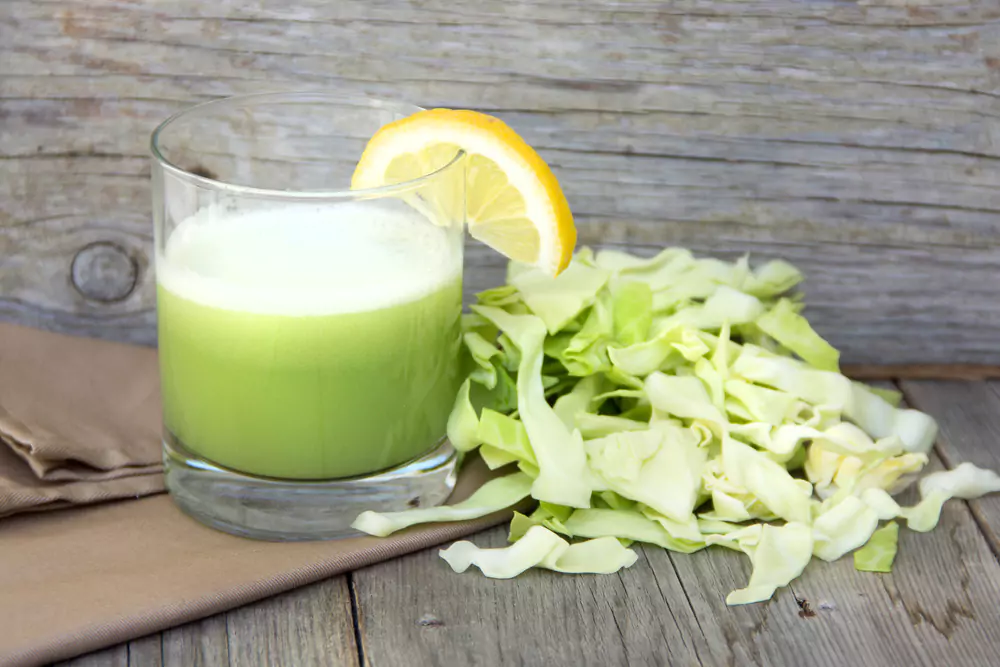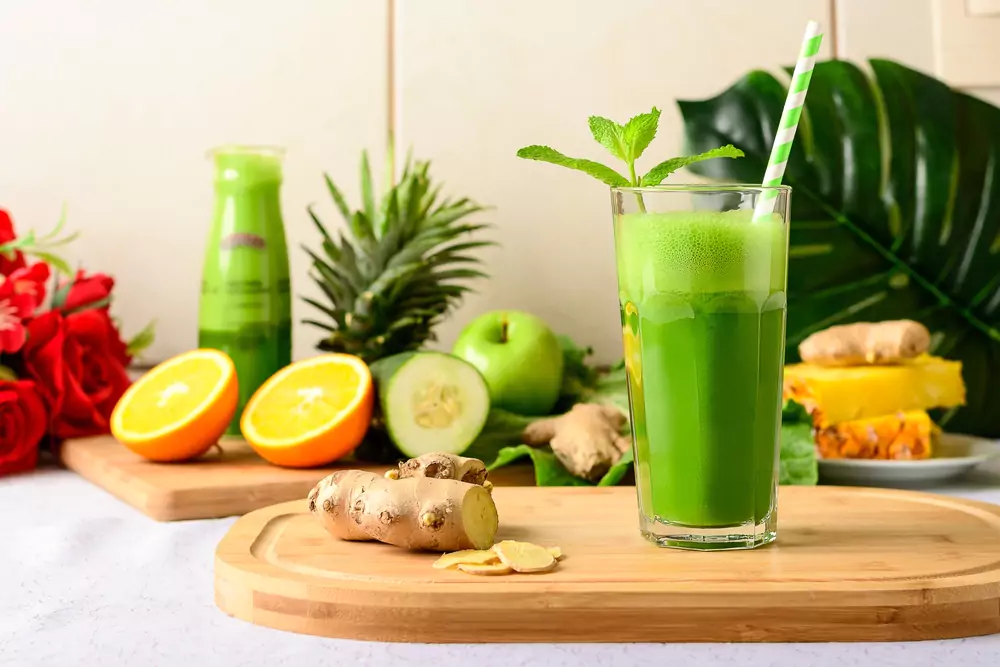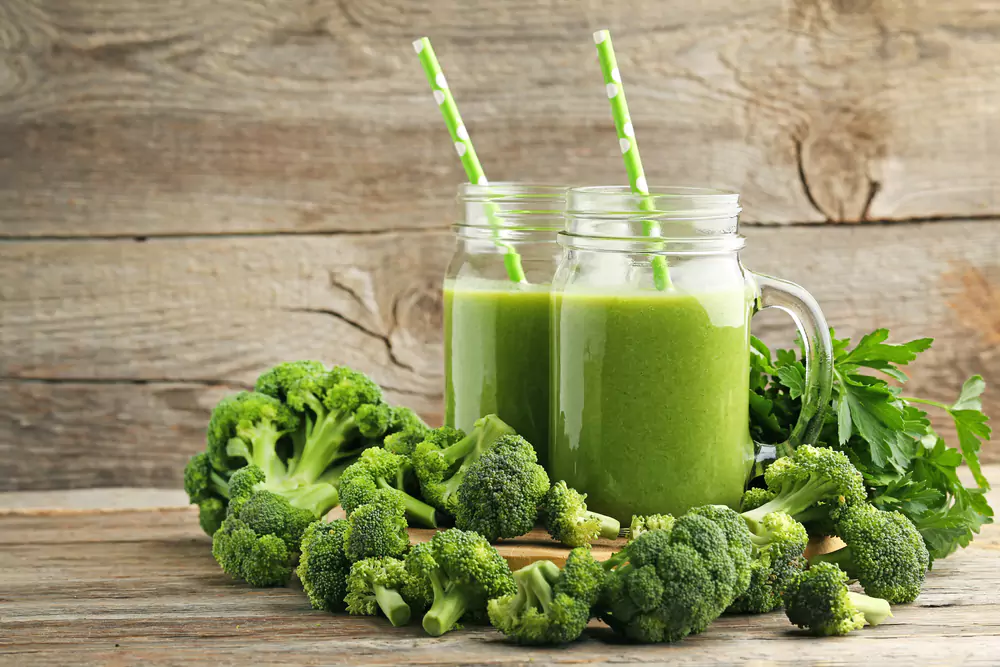If you’ve ever wondered how to make cabbage juice, you’re in for a treat. Cabbage juice is a powerhouse of nutrients and offers many health benefits. In this article, we’ll walk you through the simple steps to create this vibrant elixir at home, unlocking this superfood’s potential for your well-being. From its detoxifying properties to its rich vitamin and mineral content, making cabbage juice is easy and an excellent addition to your daily nutrition routine.
Cabbage Juice
Cabbage juice is a nutritious elixir extracted from fresh cabbage, renowned for its numerous health benefits. Packed with essential vitamins, minerals, and antioxidants, it has gained popularity as a natural remedy for various health concerns. Cabbage juice is known for its potential to aid digestion, boost immunity, and promote detoxification. Its anti-inflammatory properties and high nutrient content make it a valuable addition to a balanced diet, supporting overall wellness.
Cabbage Juice – Calorie Count
| Nutrient | Amount per 1 cup (236g) |
| Calories | 22 |
| Total Fat | 0.2g |
| Cholesterol | 0mg |
| Sodium | 36mg |
| Total Carbohydrate | 5.2g |
| Dietary Fiber | 2.2g |
| Sugars | 2.9g |
| Protein | 1.4g |
Selecting The Right Cabbage
When selecting a suitable cabbage for making cabbage juice, it’s essential to consider the type of cabbage that will yield the best flavor and nutritional benefits. Here are some key factors to consider:
Cabbage Varieties
Several cabbage varieties are available, including green cabbage, red/purple cabbage, Savoy cabbage, Napa cabbage, and bok choy. Each type has its own unique flavor profile and nutritional composition.
Flavor Profile
Green cabbage is the most common variety and has a mild, slightly sweet flavor. Red/purple cabbage has a peppery taste and adds vibrant color to the juice. Savoy cabbage is known for its crinkled leaves and mild flavor, while Napa cabbage has a more delicate and slightly sweet taste. Bok choy, a type of Chinese cabbage, has a mild, slightly peppery flavor.
Nutritional Benefits
Cabbage is rich in vitamin C, K, fiber, and various antioxidants. When selecting cabbage for juicing, consider the nutritional benefits you want to derive from the juice. For example, red/purple cabbage contains anthocyanins, powerful antioxidants responsible for its vibrant color.
Freshness and Quality
Choose firm cabbages, heavy for their size and free from blemishes or signs of decay. Freshness is critical to obtaining the juice’s best flavor and nutritional content.
Organic vs. Conventional
Consider whether you prefer organic or conventional cabbages. Organic cabbages are grown without synthetic pesticides or fertilizers and may be selected by those seeking to minimize chemical exposure.
Preparing The Cabbage
To prepare cabbage for cabbage juice, follow these steps:
Selecting and Cleaning the Cabbage
Choose a fresh, firm head of cabbage. Remove damaged outer leaves and rinse the cabbage under cold running water to remove dirt or debris.
Cutting the Cabbage
Use a sharp knife to cut the cabbage into smaller pieces that will fit into your juicer. Cutting the cabbage into wedges or quarters is often sufficient.
Juicing the Cabbage
Feed the prepared cabbage pieces through a juicer, following the manufacturer’s instructions for your specific juicer model.
Extracting The Juice
Cabbage juice is a nutritious and versatile liquid that can be extracted from fresh cabbage. Extracting cabbage juice involves several steps: preparation, blending, and straining.
Here’s a brief overview of how to extract cabbage juice after preparation:
Preparation
To prepare cabbage for juicing, start by thoroughly washing the cabbage under running water to remove any dirt or debris. Remove the outer leaves and cut the cabbage into smaller pieces to fit into a juicer or blender.
Blending
Once the cabbage is prepared, place the pieces into a high-speed blender or juicer. Add a small amount of water to help with the blending process. Blend the cabbage until it forms a smooth, liquid consistency.
Straining
After blending, pour the cabbage mixture through a fine-mesh strainer or cheesecloth to separate the juice from the pulp. Gently press the pulp to extract as much liquid as possible.
Storage
Once extracted, the juice can be consumed immediately or stored in an airtight container in the refrigerator for up to 2-3 days. Storing cabbage juice properly is essential to maintain its freshness and nutritional benefits.
Cabbage Juice Recipe 3 Ways

Here’s a table of three different cabbage juice recipes:
| Cabbage Juice with Ginger and Lemon | Cabbage Juice with Carrot and Apple | Cabbage Juice with Spinach and Cayenne Pepper |
| Ingredients: | Ingredients: | Ingredients: |
| 2 medium-sized cabbages, chopped | 2 medium-sized cabbages, chopped | 2 medium-sized cabbages, chopped |
| 1-inch piece of fresh ginger, peeled and chopped | 2 medium-sized carrots, peeled and chopped | 1/2 cup of fresh spinach, chopped |
| 1 lemon, peeled and chopped | 1 apple, peeled and chopped | 1/4 teaspoon of cayenne pepper |
| 1/2 cup of water | 1/2 cup of water | 1/2 cup of water |
| Ice cubes (optional) | Ice cubes (optional) | Ice cubes (optional) |
Instructions:
- Add all the ingredients to a blender or juicer and blend until smooth.
- Strain the juice through a fine-mesh sieve or cheesecloth to remove any pulp or fibers.
- Serve immediately or store in the fridge for later use.
Flavoring Options
Here are some flavoring options for cabbage juice:
Citrus Fruits
Adding citrus fruits such as lemon, lime, or orange can provide a refreshing and tangy flavor to cabbage juice. The acidity of the citrus fruits can help balance the earthy taste of the cabbage juice.
Ginger
Freshly grated or juiced ginger can add a spicy and aromatic kick to cabbage juice. Ginger also offers potential health benefits and complements the natural flavors of cabbage.
Herbs
Herbs like mint, basil, or cilantro can infuse cabbage juice with freshness and herbaceous notes. These herbs can be muddled or blended into the juice for added flavor.
Spices
Spices such as cumin, turmeric, or black pepper can enhance the flavor profile of cabbage juice. These spices can bring warmth and depth to the juice.
Sweeteners
Natural sweeteners like honey, agave nectar, or stevia can sweeten cabbage juice, balancing its natural bitterness and creating a palatable taste.
Storing The Cabbage Juice

Storing the cabbage juice is essential to preserve its freshness and nutritional value. Proper storage methods can help maintain the quality of the juice for a more extended period.
Refrigeration
One of the most effective ways to store cabbage juice is refrigeration. After preparing the juice:
- Transfer it into an airtight container.
- Ensure that the container is clean and dry before pouring the juice in.
- Seal the container tightly to prevent air from entering, as exposure to air can lead to oxidation and spoilage of the juice.
- Store the container in the refrigerator at a temperature between 32°F to 40°F (0°C to 4°C).
Refrigerated cabbage juice can typically last up to 3-4 days while retaining its nutritional properties.
Freezing
Another method for storing cabbage juice is freezing. If you have excess cabbage juice you won’t consume immediately, freezing can help prolong its shelf life. Pour the juice into ice cube trays or freezer-safe containers, leaving some space at the top to expand during freezing. Once frozen, transfer the cubes or containers into a resealable freezer bag for added protection. Properly stored cabbage juice in the freezer can maintain its quality for up to 6 months.
Health Benefits Of Cabbage Juice
Here are the health benefits of cabbage juice:
- Cabbage juice contains vitamin C, which helps to support the immune system and prevent illnesses like the common cold and flu.
- Cabbage juice is high in fiber, which can help to promote digestive health and avoid constipation.
- Cabbage juice contains anti-inflammatory compounds like isothiocyanates, which may help to reduce inflammation and improve symptoms of conditions like arthritis.
- Cabbage juice is rich in vitamin K, essential for heart health and blood clotting.
- Cabbage juice contains fiber and other compounds that may help to lower cholesterol levels and improve overall cardiovascular health.
- Cabbage juice is low in calories and fiber, making it a good choice for those looking to lose weight.
Potential Side Effects And Precautions
While cabbage juice is generally considered healthy and safe, it’s essential to be aware of potential side effects and take precautions. Some individuals may experience digestive discomfort, including gas or bloating when consuming cabbage juice in excess due to its fiber content.
Additionally, cabbage contains compounds known as goitrogens, which may interfere with thyroid function when consumed excessively. People with thyroid conditions should monitor their intake. Cabbage juice can also lead to allergic reactions in rare cases. To minimize potential side effects, moderate cabbage juice and consult with a healthcare professional if you have underlying health concerns or allergies.
Conclusion
In conclusion, mastering how to make cabbage juice is a simple yet powerful way to harness the nutrient-rich benefits of this cruciferous vegetable. Whether seeking improved digestion, immunity support, or detoxification, this homemade elixir offers a convenient and cost-effective solution. By incorporating cabbage juice into your routine, you can enjoy its potential health advantages while contributing to your overall wellness. Embrace the goodness of cabbage juice, and raise a glass to a healthier you. Cheers to wellness!
FAQs
Is It Safe To Drink Cabbage Juice Daily?
Drinking cabbage juice daily is generally safe, but moderation is vital to avoid potential digestive discomfort. Consult a healthcare professional if you have concerns.
Is Drinking Boiled Cabbage Water Good For You?
Drinking boiled cabbage water can benefit some, as it may contain nutrients but is not a replacement for a balanced diet.
How To Make Cabbage Water For Weight Loss?
To make cabbage water for weight loss, simmer cabbage leaves in water and drink it before meals, but consult a nutritionist for a personalized plan.
How Long Should I Take Cabbage Juice?
The duration of cabbage juice consumption varies; consult a healthcare provider for guidance on incorporating it into your diet.
How To Make Cabbage Juice For Ulcers?
To make cabbage juice for ulcers, blend fresh cabbage with water and consume it; consult a healthcare professional for ulcer management.
How Much Cabbage Juice To Drink?
The amount of cabbage juice to drink depends on individual preferences and tolerance; start with a small amount and adjust as needed.
How To Make Cabbage Juice Without A Juicer Or Blender?
You can make cabbage juice without a juicer or blender by grating cabbage finely and squeezing out the juice using a clean cloth or strainer.



![Homemade Black Carrot Juice - [ Health Benefits and Side Effects ] black carrot juice](https://juicerhunter.com/wp-content/uploads/2023/11/black-carrot-juice-150x150.jpg)


